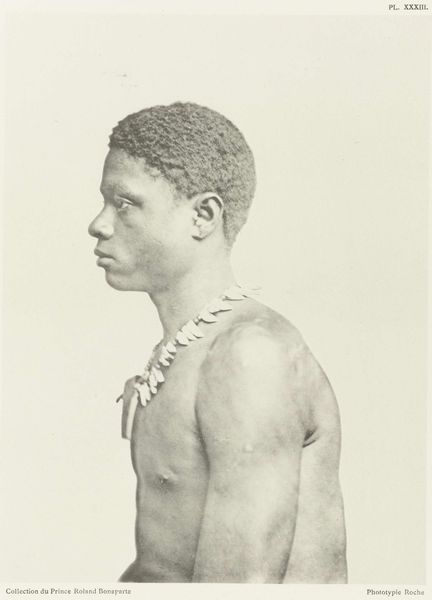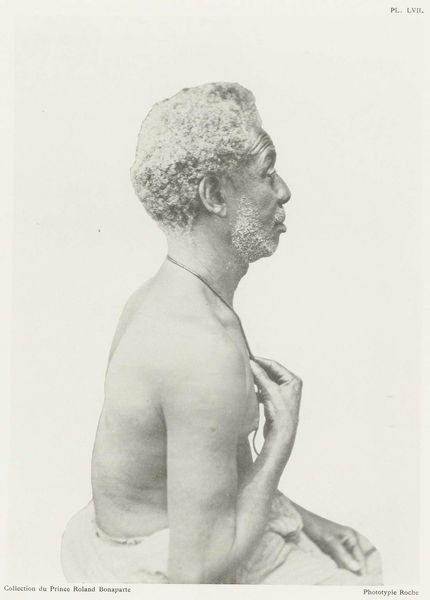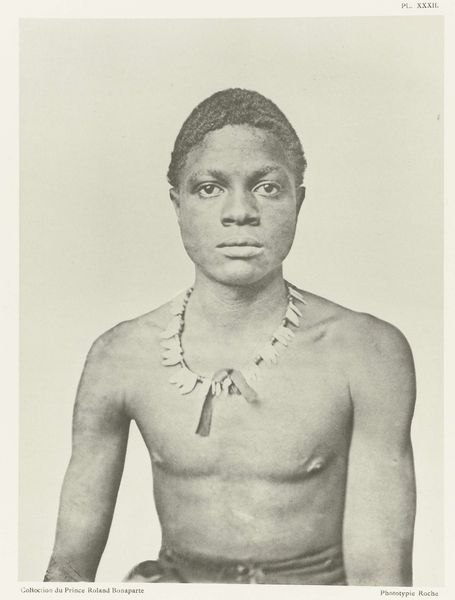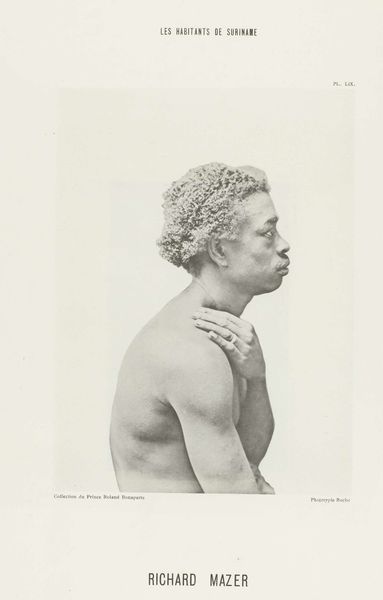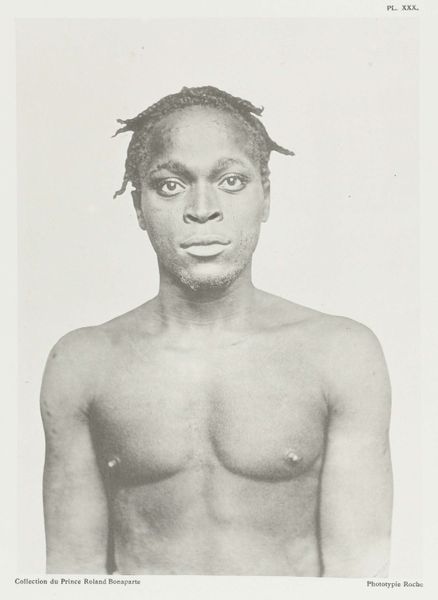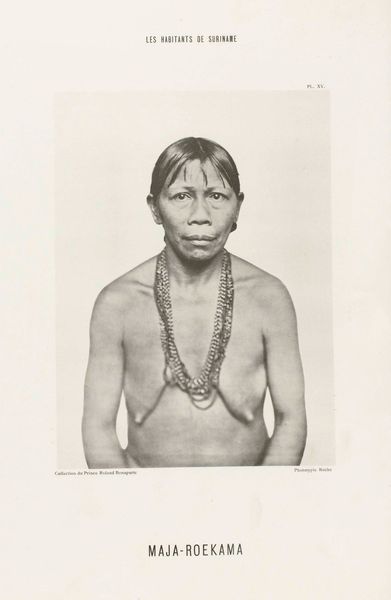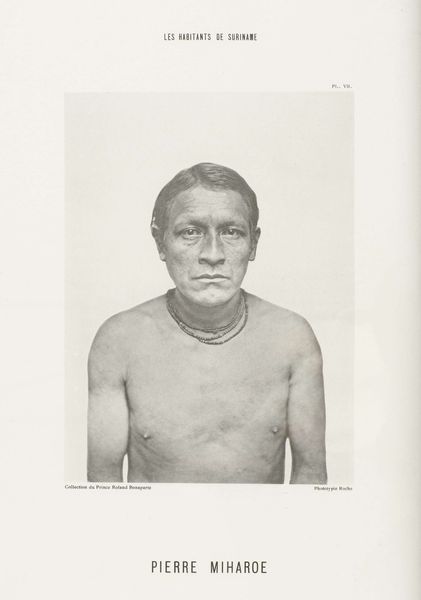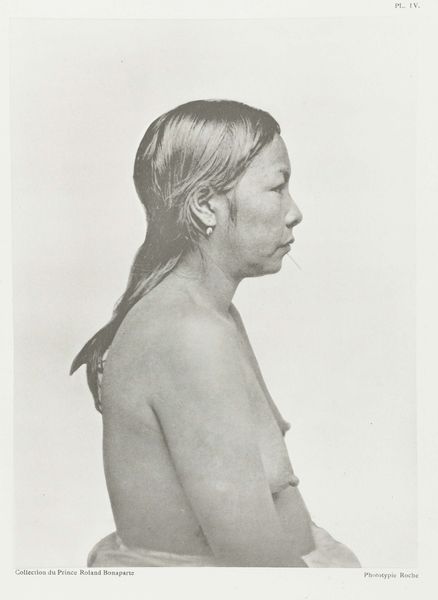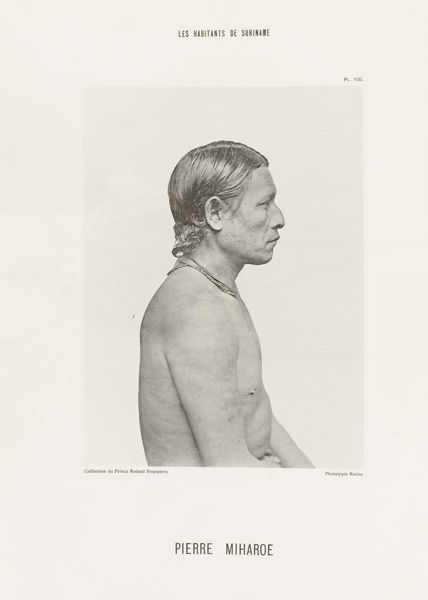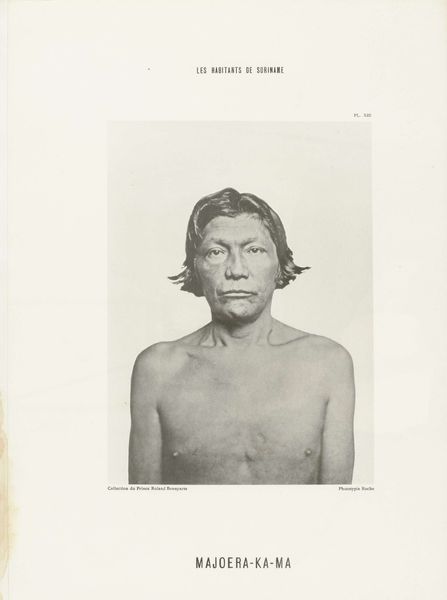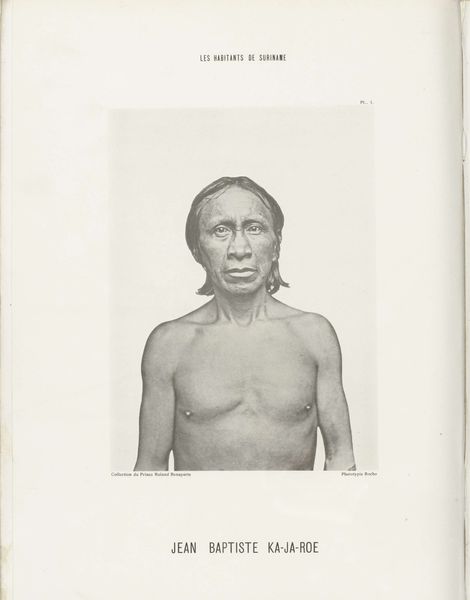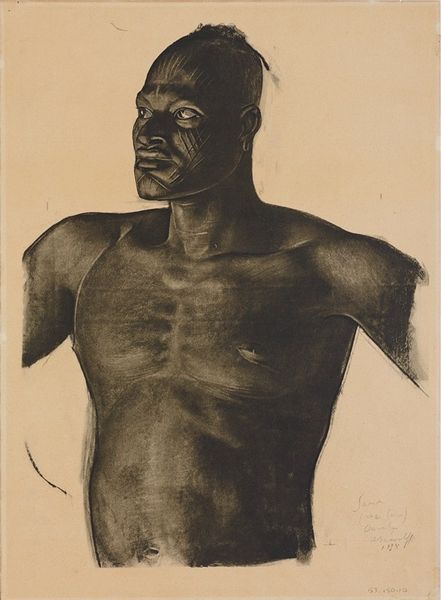
photography, gelatin-silver-print
#
portrait
#
african-art
#
16_19th-century
#
charcoal drawing
#
photography
#
gelatin-silver-print
#
portrait drawing
Dimensions: height 238 mm, width 174 mm
Copyright: Rijks Museum: Open Domain
Curator: Here we have Friedrich Carel Hisgen’s "Portret van Kojo-A-Slen-Gri," a gelatin silver print dating from 1883-1884, residing here at the Rijksmuseum. What are your immediate thoughts on this photograph? Editor: It's a striking portrait, stark in its simplicity. The profile view, combined with the high contrast of the gelatin silver print, gives it an almost clinical feel, yet there's an undeniable dignity in his posture. The textures pop; I'm particularly drawn to the way the light catches the beads of his necklace and the subtle patterns etched onto his skin. Curator: It's a photograph with complex historical undercurrents. Hisgen captured this image within the context of colonial expeditions and ethnographic studies. It’s part of a much larger project seeking to document and classify human types, which, of course, was often deeply rooted in problematic power dynamics. Editor: Absolutely. And you can't ignore the visual markers. The necklace, the markings, the specific way he's posed - it all hints at layers of meaning connected to his identity. The deliberate choices here, by both the sitter and the photographer, suggest the visual cues and the desire to present or perhaps even control a certain image, imbued with symbolism from his own culture or those assigned by others. Curator: The work’s social context is equally vital. As you noted, portraiture served social and political roles that extended beyond aesthetics. It participated in forming racial ideas, as colonial administrations sought to order societies through these methods, and it also provided a crucial method through which colonial subjects began defining their own identities. Editor: I am curious about what stories the markings tell us about his place in society and, ultimately, his identity. Scars, patterns, even just hairstyles, are potent conveyors of social status. Curator: It’s an unavoidable, but crucial, tension. It acknowledges the problematic power relations, whilst highlighting Kojo-A-Slen-Gri's visible markers of identity, and his way to actively shape and present himself. His direct gaze implies he is fully aware and deliberately choosing to display that identity within that highly specific, politically charged, historical setting. Editor: Reflecting on it now, the photograph prompts more questions than answers about representation and the gaze, really. But hopefully those questions begin dialogue, challenging assumptions regarding history. Curator: A very apt reflection, concluding in thinking more critically on image creation, social agency and self definition.
Comments
No comments
Be the first to comment and join the conversation on the ultimate creative platform.

